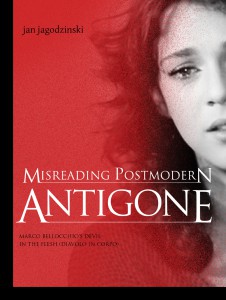Misreading Postmodern Antigone
Marco Bellocchio's Devil in the Flesh (Diavolo in Corpo)


Average rating: ![]()
| 0 | rating | |
| 0 | rating | |
| 0 | rating | |
| 0 | rating |
Your rating: -
Book Presentation:
In the mid-1980s, film director Marco Bellocchio and renegade psychoanalyst Massimo Fagioli cowrote The Devil in the Flesh, a politically and sexually charged film illustrating some of Fagioli’s controversial theories. Echoing the anti-Lacanian sentiment popularized by Gilles Deleuze, the film is perhaps best remembered for a scene in which the character Andrea misreads a section of the famous Greek tragedy Antigone. But this scene has itself been frequently misread, opening up the text to questions of feminism, politics, and the representation of Antigone—a figure frequently used and abused in feminist politics. Displaying considerable analytic depth, Misreading Postmodern Antigone considers these divergent readings and what they have to tell us about contemporary society.
See the publisher website: Intellect Books
See The Devil in the Flesh (1986) on IMDB ...
> On a related topic:
Sustainable Resilience in Women's Film and Video Organizations (2024)
A Counter-Lineage in Moving Image History
Subject: Sociology
Feminisms (2016)
Diversity, Difference and Multiplicity in Contemporary Film Cultures
Dir. Laura Mulvey and Anna Backman Rogers
Subject: Sociology
Chick Flicks (1998)
Theories and Memories of the Feminist Film Movement
by B. Ruby Rich
Subject: Sociology